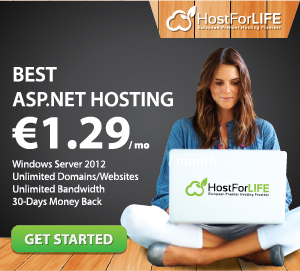As you know, ASP.NET comes in three types: MVC, Web Forms and WebPages.
1. Web Forms - This is the classic ASP.NET framework; it has all the server side controls and is used for creating dynamic websites. It does have a steep learning curve and controls most of the mark-up so there is little control. It is event-driven and is good for RAD (Rapid Application Development).
2. MVC - Model-View-Controller, this framework also has a steep learning curve, however, it is ideal for developers who like to have control over their websites and like to separate logic and UI. It is ideal for team based work.
3. Web Pages – This is the easiest of all and is what you’ll be learning. It uses the Razor View Engine and is easy to learn providing you have a good understanding of HTML, CSS, JavaScript and either C# or Visual Basic.
Today, I will introduce to you about ASP.NET WebPages.

ASP.NET WebPages is a lightweight web framework for creating rich websites using Microsoft C# or Visual Basic. The framework is the ideal starting place for newcomers to ASP.NET, as well as experienced developers who wish to get into ASP.NET development.If you're interested in learning basic programming, ASP.NET WebPages gives you the different feels between any JavaScript in a web page that you've ever written before.
You can use ASP.NET WebPages to create dynamic web pages. A simple HTML web page is static; its content is determined by the fixed HTML markup that's in the page. Dynamic pages like those you create with ASP.NET Web Pages let you create the page content on the fly, by using code. Dynamic pages let you do all sorts of things too. You can ask a user for input by using a form and then change what the page displays or how it looks. You can take information from a user, save it in a database, and then list it later. You can send email from your site. You can interact with other services on the web (for example, a mapping service) and produce pages that integrate information from those sources. Most examples of using ASP.NET Web Pages with Razor syntax use C#. But the Razor syntax also supports Visual Basic. To program an ASP.NET web page in Visual Basic, you create a web page with a .vbhtml filename extension, and then add Visual Basic code.
You'll need to use IDE when working with Web Pages and the ideal IDE that will compatible with ASP.NET WebPages is Microsoft WebMatrix. Microsoft WebMatrix is a small IDE which was released alongside ASP.NET Web Pages. WebMatrix is a tool that integrates a web page editor, a database utility, a web server for testing pages, and features for publishing your website to the Internet. WebMatrix is free, and it's easy to install and easy to use. It also works for just plain HTML pages, as well as for other technologies like PHP.
WebMatrix contains:
1. Web Pages examples and templates
2.A web server language (Razor using VB or C#)
3. A web server (IIS Express)
4. A database server (SQL Server Compact)
5. A full web development framework (ASP.NET)
With WebMatrix you can start from scratch with an empty web site and a blank page, or build on open source applications from a "Web Application Gallery". Both PHP and ASP.NET applications are available, such as Umbraco, DotNetNuke, Drupal, Joomla, WordPress and many more. WebMatrix also has built-in tools for security, search engine optimization, and web publishing. The skills and code you develop with WebMatrix can seamlessly be transformed to fully professional ASP.NET applications.
But, you don't actually have to use WebMatrix to work with ASP.NET Web Pages. You can create pages by using a text editor too, for example, and test pages by using a web server that you have access to.
HostForLIFE.eu ASP.NET WebPages 3.1 Hosting
HostForLIFE.eu is European Windows Hosting Provider which focuses on Windows Platform only. We deliver on-demand hosting solutions including Shared hosting, Reseller Hosting, Cloud Hosting, Dedicated Servers, and IT as a Service for companies of all sizes. We have customers from around the globe, spread across every continent. We serve the hosting needs of the business and professional, government and nonprofit, entertainment and personal use market segments.
